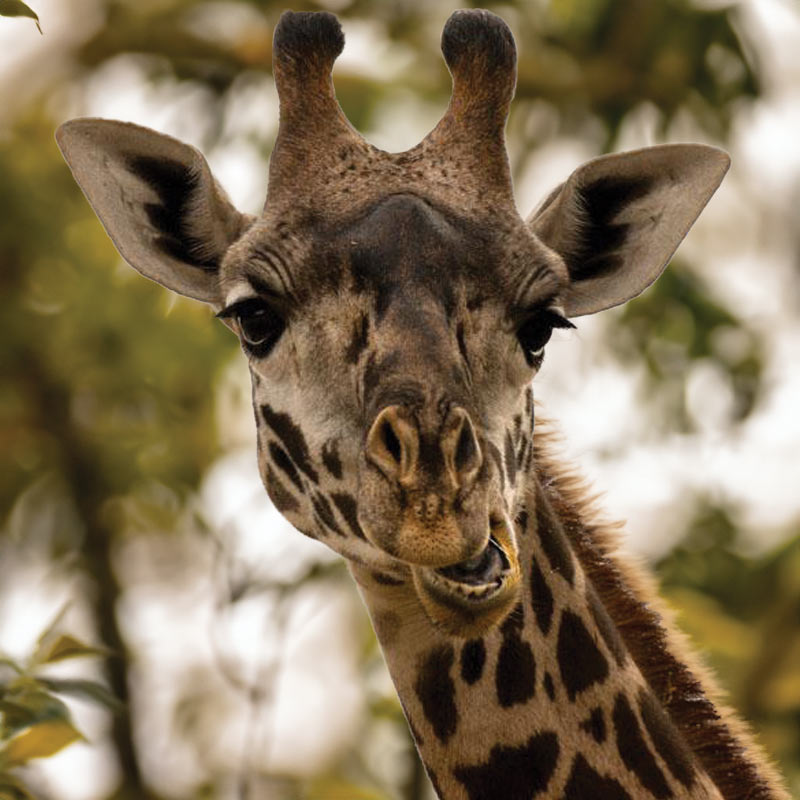
Earlier in October, Matu sustained a broken toe on his hind left foot. “Standing sedation” treatment began immediately, along with 3x a day training sessions https://bit.ly/476KYyT to best care for this 11-foot-tall patient. As you might imagine, caring for a foot issue on a giraffe is no easy task.
How do you treat a Masai giraffe with a broken toe?
Step One: Training
Early on in Matu’s injury, Wildlife Care Keepers began 3x daily training sessions in the “Giraffe Restraint Device” (GRD), a padded hallway with doors to access different parts of the giraffe. To make this experience as positive as possible for Matu and reduce the risks for all involved, he enters the GRD throughout the day and is rewarded with lots and lots of treats! Even on days when a procedure doesn’t take place, he spends time in the GRD voluntarily to maintain the space as a positive one through positive reinforcement. The trusting relationship he has developed with his Keepers since he was born has proven invaluable in this training process. The GRD is crucial both for his safety and for the safety of the team treating him, which is why this behaviour is a key ingredient for his healing success!
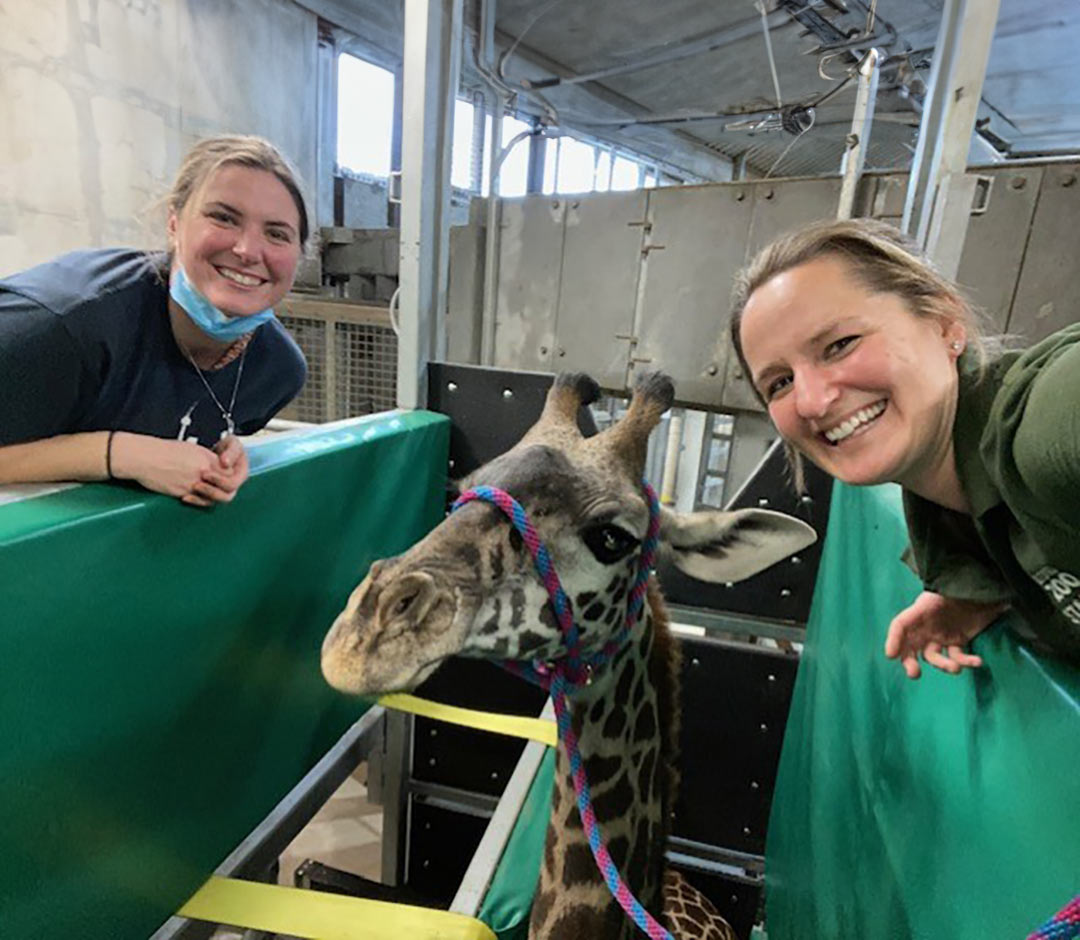
Step Two: Quality Care and Expertise
As a result of the incredible training and trust between Matu and Wildlife Care Keepers, we are proud to share that Matu’s treatment is going well.
During these procedures, Matu first enters the GRD, where he is positioned with belly straps to help support him if needed. He is given a very light sedative and then his leg is raised into a position that is comfortable for him and safe for the team to work.
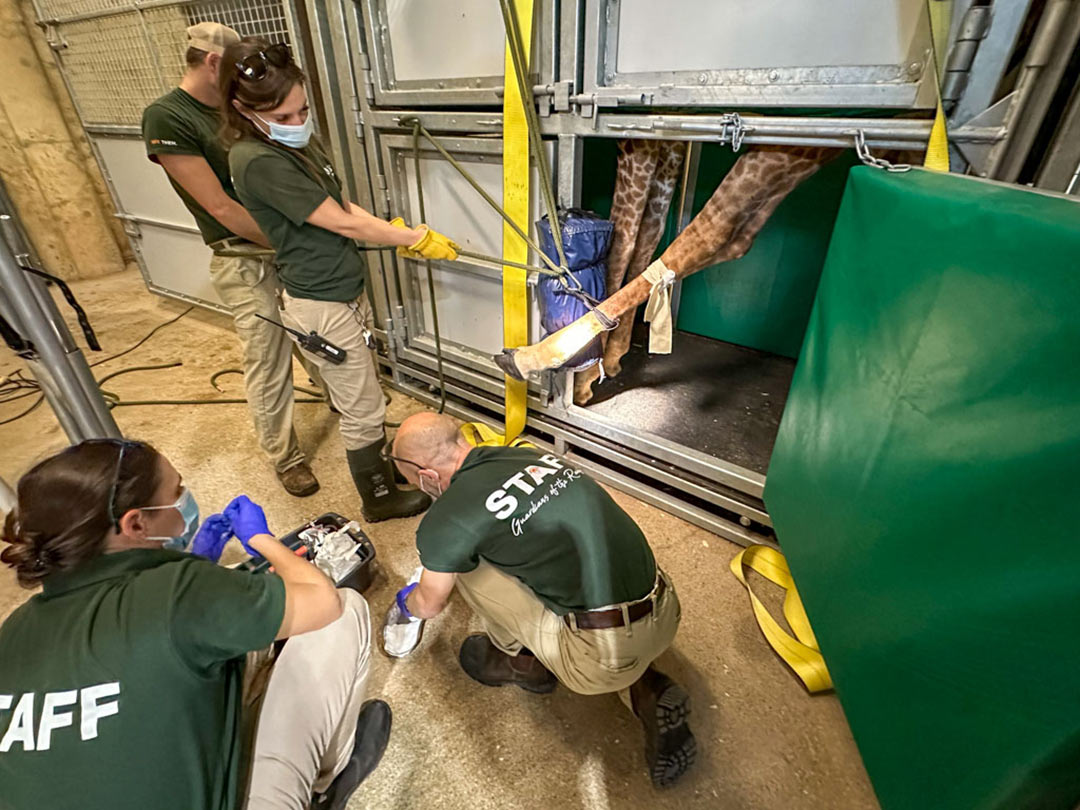
His dressing was taken off and the team inspected the injury site for comparison to previous exams. A tourniquet was then placed near his ankle and a local anesthetic and an antibiotic were given, providing pain relief while his toe was being worked on and highly localized antibiotic therapy.
Whilst this perfusion is working, Matu stood in a footbath of Epsom salts and iodine. Then the tourniquet is removed, the bath drained, and his foot is raised again into a position where we could gently clean the wound.
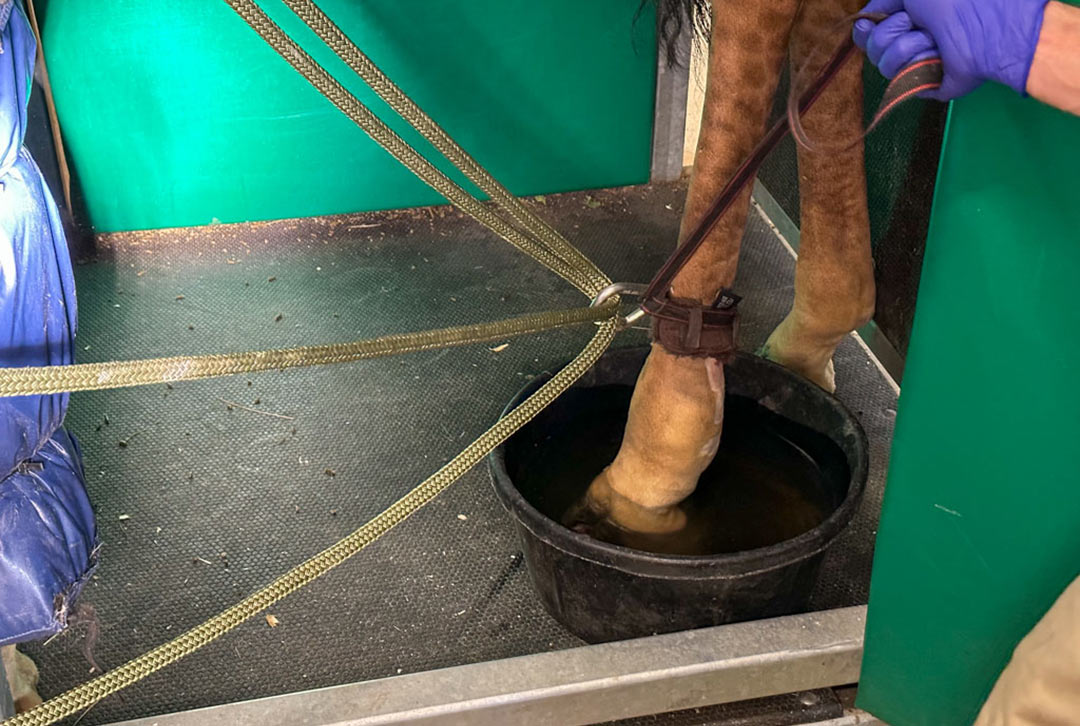
Finally, his foot was redressed with his very own special giraffe “bootie” to protect this toe and ensure it remained clean until it was time to repeat the entire process (the various bootie layers included: a clean baby diaper, gauze, vet wrap, duct tape and bandaging!).
Most recently, Matu no longer requires this booty which is a significant step for Matu’s journey. Keepers are still doing 2-3 training sessions a day in the GRD as they continue to monitor his progress closely now that he is boot-free. Keepers still keep a close eye on him to ensure he is comfortable, and the Veterinary team continues to examine the bottom of his foot on a bi-weekly basis.
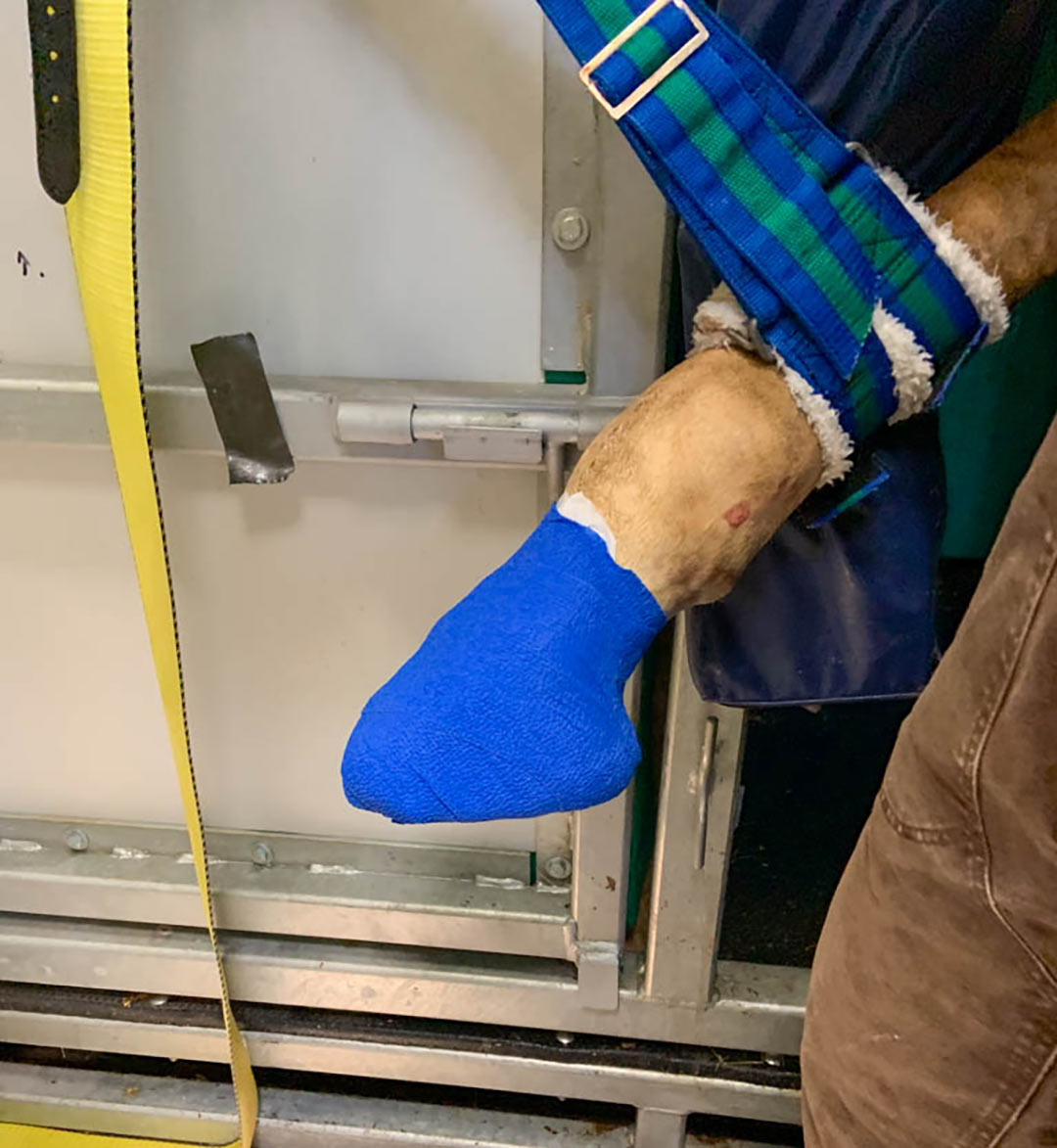
Matu’s toe may always require extra care and attention so that his toe has a more “normal” appearance, but more importantly, his gait and overall well-being appear unaffected by the injury. He’s even been spotted giving his sister Amani kicks to the chest while playing with a Christmas tree!
While we are still not out of the woods quite yet, the Wildlife Care team is very excited about this step in Matu’s recovery.
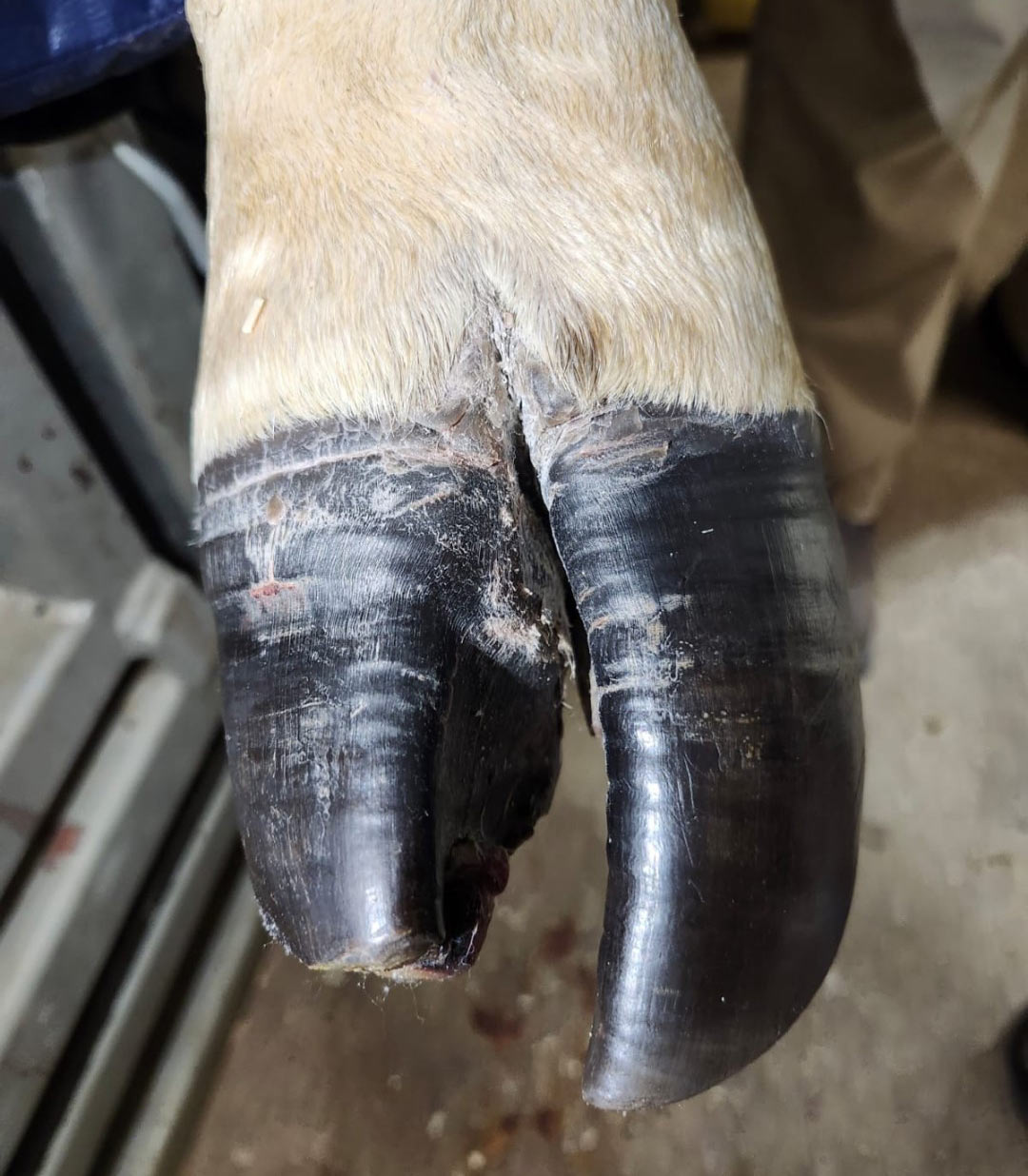
Being able to do this was and is life-saving for Matu – a giraffe cannot live on three legs and giraffe general anesthesia is an extremely high risk. Thanks to the GRD and exemplary teamwork, we have been able to care for Matu as his injury heals and are excited to see him make a full recovery.